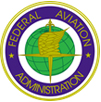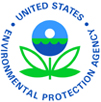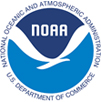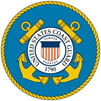U.S. Department of Homeland Security, U.S. Coast Guard (USCG)
Under 14 U.S.C 81, the USCG is authorized to establish aids to navigation. To obtain approval to establish a private aid to navigation (PATON), applicants must submit CG-2554 (PATON application). A PATON is a buoy, light, or day beacon owned and maintained by any individual or organization other than USCG. These aids are designed to allow individuals or organizations to mark privately owned marine obstructions or other similar hazards to navigation. A meteorological tower and/or buoys in the wind energy area, regardless of height, would be considered a PATON and thus would be required to have lighting and marking for navigational purposes.

U.S. Department of Defense (DOD), U.S. Army Corps of Engineers (USACE)
Rivers and Harbors Appropriation Act of 1899 (33 USC 401 et seq.), Section 10 (33 USC 403) delegates to the USACE the authority to review and regulate certain structures and work that are located in or that affect navigable waters of the United States. The Outer Continental Shelf Lands Act (OCSLA) extends the jurisdiction of the USACE, under Section 10, to the seaward limit of Federal jurisdiction. 33 U.S.C. 401 et seq.; 33 U.S.C. 1344; 33 U.S.C. 1413. Please contact the appropriate division or district for more information.

Federal Aviation Act of 1958; 14 CFR Part 77, requires that when construction or alteration is proposed, adequate notice be given to the FAA as necessary to: 1) evaluate the effect on safety in air commerce and the efficient use and preservation of the navigable airspace and of airport traffic capacity at public use airports; 2) determine whether the effect of proposed construction or alteration is a hazard to air navigation.
The FAA conducts aeronautical studies on proposed construction out to 12 NM (territorial seas). There is a gap between the territorial seas and development of the outer continental shelf (out to 240 NM). This means that the FAA does not evaluate and determine impacts to the navigable airspace beyond 12 NM. See Advisory Circular 70/7460-1L, Obstruction Lighting and Marking.

Requires USEPA (or an authorized State agency) to issue a permit before construction of any new major stationary source or major modification of a stationary source of air pollution under the Clean Air Act (42 U.S.C. § 1701, et. seq.). The permit — called a Prevention of Significant Deterioration (PSD) permit for stationary sources located in areas that comply with NAAQS and a Nonattainment Area Permit in areas that do not comply with National Ambient Air Quality Standards (NAAQS) — must control emissions in the manner prescribed by USEPA regulations to either prevent significant deterioration of air quality (in attainment areas), or contribute to reducing ambient air pollution in accordance with an approved implementation plan (in nonattainment areas). For more information, click here.
EPA also issues National Pollutant Discharge Elimination System (NPDES) permits for discharges in federal offshore waters under the Clean Water Act (33 U.S.C. § 1251, et. seq.). USEPA requires the owner or operator of a stationary source that has more than a threshold quantity of a regulated substance in a process to submit a Risk Management Plan to USEPA. For more information, click here.

Marine Mammal Protection Act (MMPA) (16 U.S.C. § 1361, et seq.). If an energy project could harm, harass or take a marine mammal then the applicant may need an incidental take authorization from National Marine Fisheries Service (NMFS). Early consultation with NMFS is suggested to best determine the need for potential authorization.
Incidental Take Permits are issued only by the NMFS Office of Protected Resources Permits and Conservation Division located at NOAA Headquarters in Silver Spring, Md. This cannot be combined with a consultation under the Endangered Species Act or Magnuson-Stevens Fishery Conservation and Management Act.


